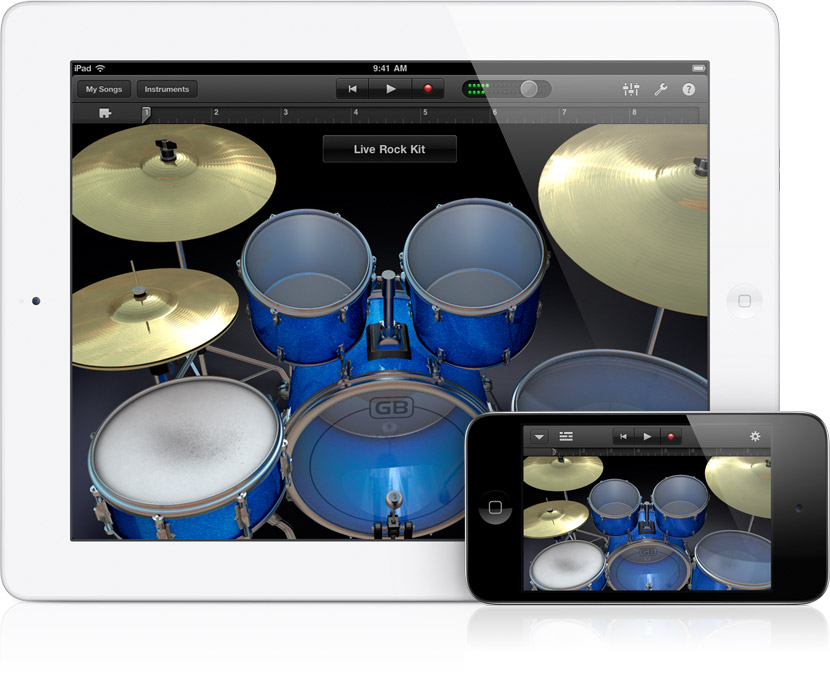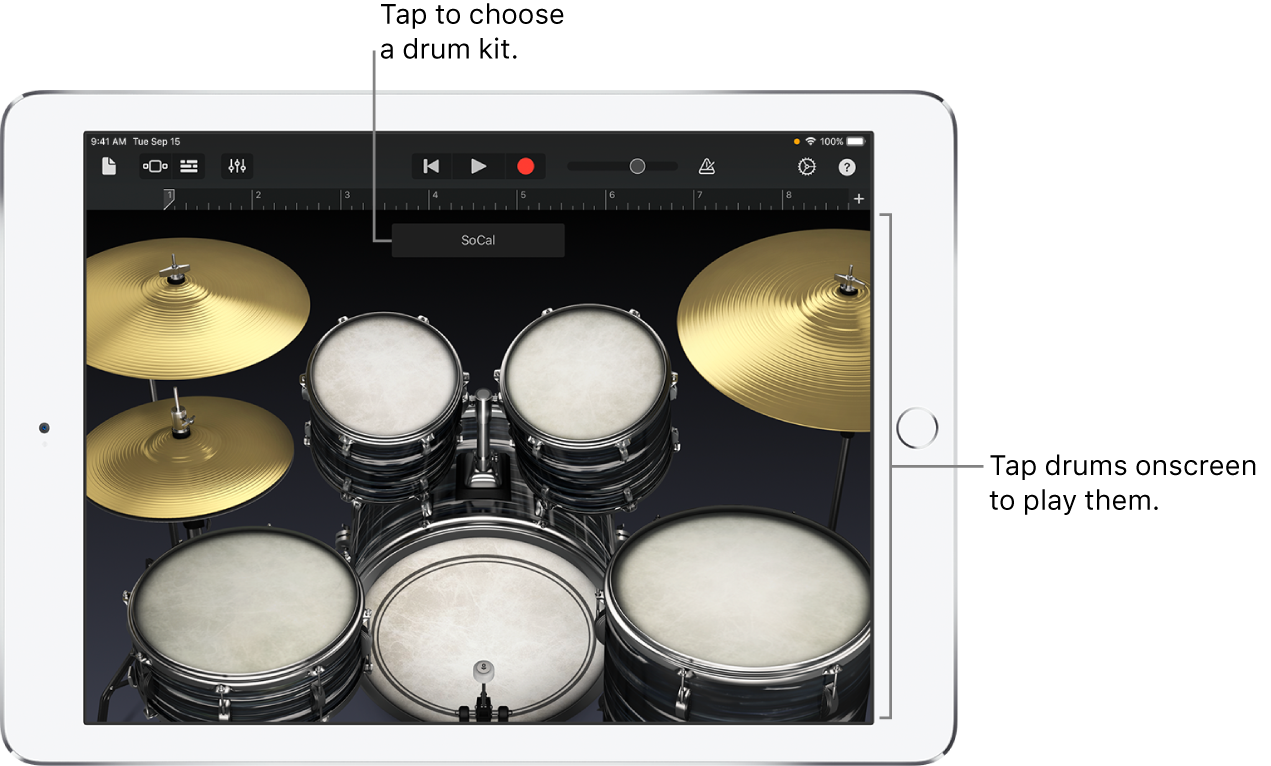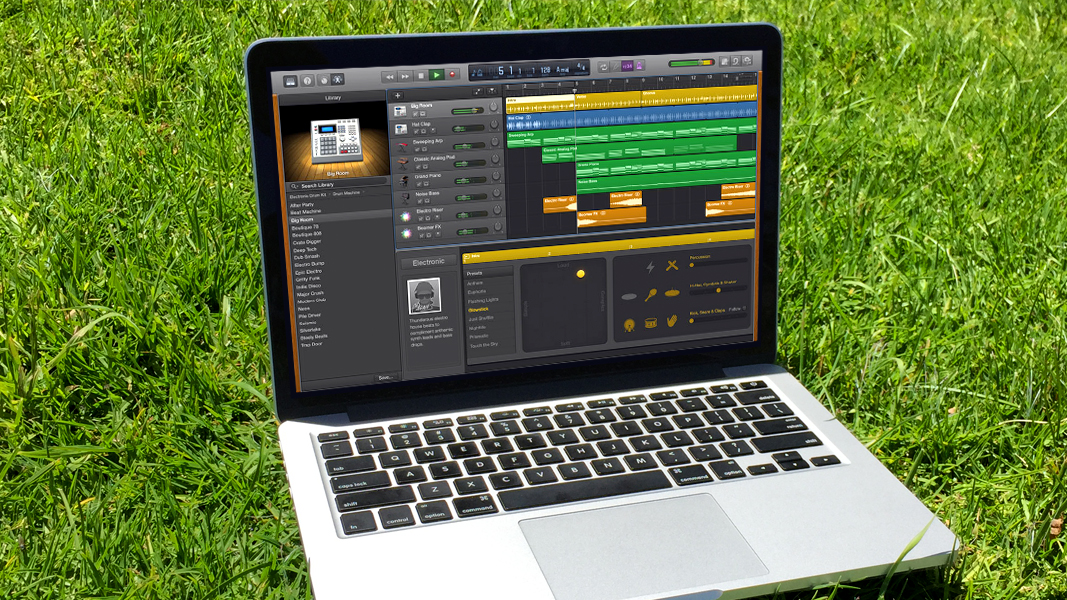
- Garageband drums slow song software#
- Garageband drums slow song Bluetooth#
- Garageband drums slow song mac#
Align the left edge of the file with the bar or beat (on the ruler) where you want it to start playing.Ī new region created from the audio or MIDI file is trimmed to the end of the current song section, unless the current song section is set to Automatic. To preview an audio file, tap it in the list.ĭrag an audio or MIDI file left or right to show Tracks view. The files are moved to the GarageBand File Transfer folder and are now visible in the Files tab of the Loop Browser. Tap the Tracks button to open Tracks view, then tap the Loop Browser button in the control bar.Ī message appears asking if you want to move the audio or MIDI files to the GarageBand File Transfer folder. In GarageBand on your iPhone, set the length of the song section to Automatic to import the entire audio or MIDI file otherwise, only the portion of the file that fits the current song section is imported.Īfter importing the audio or MIDI file, you can make the song section longer, then resize the region so more of it plays.
Garageband drums slow song mac#
On your Mac, select the icon for your iPhone, then click Files.ĭrag the audio or MIDI files you want to import from another Finder window (or from your Mac desktop) to GarageBand in the list. Your connected iPhone appears in a Finder window sidebar under Locations. Use the control bar and the track headersĬonnect your iPhone to your Mac using a USB or USB-C cable.

Garageband drums slow song Bluetooth#
Use a Bluetooth MIDI device with Touch Instruments.Use effect plug-ins with Touch Instruments.Create drum patterns with the Beat Sequencer.You can also create a selection of your favorite loops, create your own loops, and customize the Loop Browser.

Using the Loop Browser, you can find loops with the instrument, genre, and feel you want, play loops, and add loops to your project.
Garageband drums slow song software#
You can convert them to software instrument loops by adding them to software instrument tracks, and also convert them to audio loops by adding them to audio tracks. You can change drummers in the Library and parameters in the Drummer Editor to change the sound of the loop. You can add software instrument loops to software instrument tracks, and also convert them to audio loops by adding them to audio tracks.ĭrummer loops (yellow) contain all the performance information necessary to play a Drummer region, such as the artist and parameter adjustments. You can change the sound of the instrument used to play the loop. Software instrument loops (green) can be edited just like other MIDI regions, and can be viewed in the Piano Roll Editor and Score Editor. You can add them to audio tracks, and edit them just like other audio regions in the Tracks area and Audio Editor. You can use several loops together, even if the loops were recorded at different speeds and in different keys.Īudio loops (blue) are audio recordings. When the project plays, the region plays at the project’s tempo and key. When you add an Apple Loop to a project, a region is created for the loop. These loops contain musical patterns that can be repeated over and over, and can be extended to fill any amount of time. GarageBand settings and keyboard shortcutsĪpple Loops are prerecorded musical phrases or riffs that you can use to easily add drum beats, rhythm parts, and other sounds to a project.Use iCloud to share a project to for iOS.If your lesson doesn’t finish downloading.Choose the input source for your guitar.Create key changes with the Transposition track.Create tempo changes with the Tempo track.Build a project with arrangement markers.Compare an edited Smart Control with its saved settings.Change the Bass Amp Designer signal flow.Choose and place the bass amp microphone.Rename MIDI regions in the Score Editor.Quantize note timing in the Score Editor.Edit music notation in the Score Editor.Use automation in the Piano Roll Editor.




 0 kommentar(er)
0 kommentar(er)
